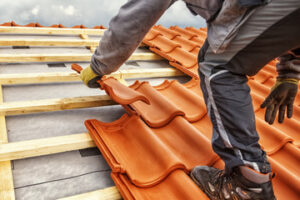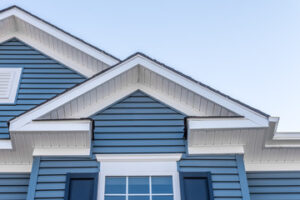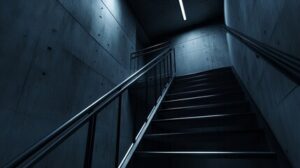The Evolution of Roofing
Your roof is your silent guardian, shielding you from the elements 24/7. But Roofing Murfreesboro is an evolving science, with a wide range of materials and styles to consider.
 Start with a basic sketch of your roof. Note the area of each plane (length multiplied by width) and the areas of right triangles.
Start with a basic sketch of your roof. Note the area of each plane (length multiplied by width) and the areas of right triangles.
Ever since the dawn of civilization, humans have sought shelter from the elements. This need has been met by a myriad of different roofing solutions, reflecting human ingenuity and adaptability. Throughout history, roofs have evolved from simple reed and clay structures to the smart, sustainable, and resilient designs that we are used to today. The evolution of roofing reflects humanity’s drive to improve and protect, from the first caves to the homes that we now live in.
Interestingly enough, the terms “roof” and “roofing” have slightly different meanings. A roof is the tangible outer covering of a building, while roofing encompasses the entire process of installing, maintaining, and repairing that shield.
In early times, people simply gathered whatever material was available to construct their shelters’ roofs, such as reeds, branches, leaves, and animal skins. This is why archaeologists have found evidence of primitive thatch roofs dating back to the earliest civilizations. Later, these early roofs were replaced with materials that could better withstand the weather, such as clay and stone tiles.
A key advancement came around the twelfth century, when clay and concrete tiles were mass produced. These tiles allowed architects and builders more freedom to design their buildings, as they didn’t have to be limited by the limitations of natural materials.
Around this time, it was also discovered that adding cement to the mix made a stronger and longer-lasting tile. This was a significant improvement over wood and slate, which had been the standard prior to this. The industrial revolution helped bring these new types of roofs to the States, where they became incredibly popular due to their durability and affordability.
The current roofing industry is booming thanks to advancements in the manufacturing and installation processes of these products. Many of the roofing materials that we use today are designed with safety in mind, and they are also free from toxic chemicals that were widely used in older roofing systems, like lead and asbestos. These old components are currently being removed from homes and disposed of properly, with a focus on sustainability and eco-friendly alternatives.
Materials
There are many different roofing materials, each with its own advantages and drawbacks. Choosing the right material for your home depends on factors such as cost, durability, climate, and aesthetics. Common roofing materials include wood, asphalt shingles, metal, and clay tiles.
Wood shingles have been used for centuries and offer a traditional look that is popular with many homeowners. However, they can be prone to mold and rot in wet climates. Additionally, wood shingles can be expensive and require frequent maintenance.
Another long-lasting roofing option is slate, which was used in Europe during the medieval period. Slate is highly durable and fire-resistant, but it also comes with a high price tag and requires special skills to install.
Modern roofing materials have been developed to provide more energy-efficient and environmentally friendly options for homeowners. Among these are solar reflective coatings, which can help to reduce a building’s energy costs by reflecting sunlight instead of absorbing it. Other new roofing materials are made from recycled products, such as rubber, plastic, and composites, and are designed to mimic the appearance of more expensive options like slate and wood.
Choosing the best roofing materials for your home can be difficult, but it’s important to consider all of your options before making a final decision. Some of the most important considerations are the initial installation cost and long-term maintenance expenses. In addition, you should make sure that the chosen material can withstand local weather conditions, including heavy rains and high winds.
Asphalt shingles are one of the most common roofing materials, as they are inexpensive and easy to install. They are composed of mineral granules and a waterproof asphalt base mat, and they are available in a wide variety of colors and textures to complement various architectural styles. They are also relatively lightweight and can last up to 50 years with minimal maintenance.
Metal roofs are an excellent choice for those who want a stylish and durable roofing option. Metal roofing is resistant to rust and corrosion, and it can withstand extreme temperatures. It is also fire-resistant and offers an attractive, sleek appearance. Despite their advantages, metal roofs can be expensive and may need periodic repairs.
Installation
A good roofing job starts with proper preparation. A trustworthy roofing professional will consult with local building departments to understand the specific installation requirements for your area. They will also take into account factors like whether you’re reroofing or replacing an existing roof covering. Typically, the first step in re-roofing is to tear off the old shingles and underlayment. Then sheathing, usually plywood or oriented strand board (OSB), can be installed. This allows for a more uniform surface under the new roofing materials, and it helps prevent moisture buildup.
The next step is to install a waterproof underlayment. This will prevent leaks even if the outer layer of roofing material is damaged during construction or a storm. It is important to choose a high-quality underlayment and to follow the manufacturer’s instructions for installation. If your roof has vent pipes, they must be properly sized to ensure water resistance. The pipe should be capped with a flashing collar that’s secured to the sheathing with a waterproof sealant.
Once the sheathing is in place, you can start installing the shingles or tiles. Shingles are individual pieces of roofing material that overlap to create a protective barrier. They are generally installed from the bottom of the roof up, row by row. As you work, be sure to properly overlap each shingle so water cannot get underneath them. It is also important to use a wide shingle nail, as this will help prevent nails from pulling out of the sheathing. A shingle with a drip edge is also recommended, as this will direct water away from the structure.
Preparing For Siding Installation
A reputable contractor will provide you with clear information and pricing for your siding project. The size of your home and any design features will impact labor and material costs.
Ensure your siding installers are using ring shank or siding rated nails to minimize unintended damage during the installation process. Allowing for a small amount of expansion and contraction between seasons is essential to avoid buckling or warping. Visit https://sidinginstallationlongisland.com/ to learn more.
When you’re replacing your siding, there are a variety of factors that can impact the cost. These include the type of material you choose, the size and layout of your home, the location, and any old siding removal or permits that may be required. Other costs may also be associated with installing new windows, doors, and insulation.
When estimating the cost of new siding, start with the total square footage of your house. To calculate this, measure the horizontal width and vertical height of each wall and add them together. Be sure to account for eaves and gables, as well as any other structures that require a different measurement. This will give you a more accurate estimate of the amount of materials needed.
In addition to the material cost, you’ll also need to factor in labor costs. These can vary depending on your contractor and location, so be sure to get a detailed quote before beginning the project. You may also need to pay for a permit or inspection, which will depend on your local building codes.
Another important consideration is the complexity of your home’s layout and design. For example, a two-story home will typically cost more to install than a one-story ranch. This is because the extra work involved with a more complex structure can increase the cost of labor and supplies.
Lastly, you should consider the time of year you want to install your new siding. It’s generally best to do so in the fall or winter, when labor costs are lower due to the contractor’s off season.
You should also keep in mind that the siding installation process can be dangerous for children or pets, so it’s a good idea to vacate your home during this time. While the crew will do their best to keep the area safe, there are still hazards present, such as scaffolding, nails and other debris. Additionally, if you have children that nap during the day or skittish pets, it’s a good idea to keep them inside while the work is being done.
Materials
Siding is a great way to enhance the exterior of a building. It is available in a wide variety of colors and materials. Some types of siding are more durable and expensive than others, while some are less costly but require more maintenance. The best choice for your project will depend on the climate and ambiance you want to create.
Before you begin your siding installation, prepare the area by removing any old material and cleaning it well. If you’re working on an existing house, check the sheathing (plywood) for any moisture and replace it if necessary. Also, replace the insulation.
You can buy the siding you need at a lumber yard or home improvement center. When choosing your materials, start by measuring the width and height of the walls you’ll be sidinging. Multiply the numbers together to get the square footage of each wall, and subtract the square footage of any doors or windows. This will help you determine how much siding to purchase. It’s also a good idea to add an allowance factor for waste to your measurements.
When you’re ready to install the siding, make sure you have the right tools for the job. For example, you’ll need a tape measure to accurately cut the lengths of the siding. A power saw is another useful tool for the job, as it can quickly and easily make straight cuts. Lastly, you’ll need a drill and a level to ensure accurate installations.
If you’re installing vinyl siding, be sure to use corrosion-resistant fasteners. These include aluminum or galvanized steel nails, screws, or staples. The fasteners should be spaced no more than 16 inches apart, and should be used to secure the siding at least every 12 inches.
Wood panels are a popular option for homeowners because they offer a natural look and are relatively easy to maintain. They’re also available in a variety of colors and styles. However, they’re prone to damage from hail and other weather events, so you should install it with care. Other types of siding include stucco, which is a cement and sand-based material that’s often used in the Southwest. It’s energy efficient and highly durable, and it can be tinted to match your home.
Installation
As with any home improvement project, there are a number of preparation steps that need to be taken before the actual siding installation begins. This includes cutting grass short and moving any furniture, decorations, or stacks of firewood away from the area where work will be done. In addition, it is important to remove any rotting boards that have been affected by moisture penetration and to scrape off loose caulking and re-caulk the areas where new caulking will be applied.
Once the wood trim is removed and sheathing is nailed in, the installer can begin installing the siding panels. These are nailed to the wall using hot-dipped galvanized coil nails, which provide adequate holding strength without rusting or corroding. Before nailing the first panel, make sure that the sheathing is completely flat and that all fasteners penetrate at least 1 1/4 inches into the framing of the wall. This will help prevent floor-plate compression, which can cause the siding to buckle at the intersection of the sheathing and the wall.
The siding is installed in rows, beginning at the back corner of the building and working towards the front. When installing each row, it is necessary to leave a quarter inch of space between the panels and any corner posts or window trim. This will allow for expansion and contraction of the siding and will help prevent water intrusion that can lead to rot, mold, or insect infestation.
Installing the flashing is also critical to preventing water damage and maintaining the integrity of the exterior walls. This is a water-resistant barrier that protects against wind, rain, and other environmental conditions. The barrier should be installed in accordance with local building codes and should extend around all doors, windows, and vents. In addition, flashing should be used at the corners of the building, between the walls and roofing, and around any electrical wiring or conduits that run through the exterior wall.
Once the siding is installed, it is time for a final cleanup and preparation. Before starting, the installer should check with the local zoning board to ensure that the installation meets all building requirements. In addition, the installer should review the manufacturer’s warranty and check that the sheathing has been nailed properly. This will help ensure that the warranty is valid and that the siding is protected against defects and problems.
Maintenance
When installed properly, siding serves as a shield for your home or business from moisture damage, UV rays and pests. It also provides extra insulation to help keep your building comfortable in all weather conditions. Over time, however, siding can develop cracks or other damages that require timely repair to avoid further deterioration and costly repairs. If you’re planning to install new siding, it’s important to understand the maintenance requirements of different materials before making a decision.
Wood siding requires a greater degree of maintenance to prevent rot, insect infestation and moisture damage. While many manufacturers claim their products are low-maintenance, it’s important to do your homework before committing to a specific material. Checking product reviews and customer feedback can give you a better idea of how long your siding will last, its durability, appearance and ease of maintenance.
The proper acclimation process is key to minimizing or preventing wood movement during the installation and storage phases of a siding project. All lumber should be stacked in an environment that is dry, cool and protected from sunlight for 10-14 days prior to instillation. The best setup for this is a carport, open garage or covered patio. This will allow the wood to acclimate to the environment before being used for construction and reduce the chances of warping, cupping or other defects.
It’s a good idea to walk around your home or business twice a year and inspect its exterior siding for any damage or wear and tear. This will also help you spot problems early on, such as gaps or cracks in the walls that can let moisture inside and affect the structure’s overall health. It’s also a good idea to clean your siding regularly to remove dirt and mildew stains. Using a garden hose and sponge, or a pressure washer with a soft brush attachment, is an effective way to clean most types of siding. If you need to remove rust stains, you can use a solution of three parts water and one part vinegar or lemon juice. In addition, if you see any signs of insect or bird nests in the gutters, it’s a good idea to remove them as soon as possible to prevent damage.
Why You Should See a Chiropractor
If you are suffering from back pain, neck pain, joint or muscle problems, or headaches, you should seek the help of a chiropractor. Chiropractor Bentonville is an expert in the field of chiropractic medicine and offers hands-on treatment with no drugs. Chiropractors use a variety of treatment modalities, including manipulation, soft tissue techniques, and instruction on exercises. They also refer their patients to physiotherapists and medical specialists for further assessment and treatment.
 Relieves Pain. Chiropractic care is a safe and effective way to relieve pain. It involves physical manipulation of the joints, muscles and tendons to promote the body’s natural healing process. When you visit a chiropractor, the first step is to discuss your symptoms and health history. Then, the doctor performs a medical exam and may request X-rays or other imaging tests.
Relieves Pain. Chiropractic care is a safe and effective way to relieve pain. It involves physical manipulation of the joints, muscles and tendons to promote the body’s natural healing process. When you visit a chiropractor, the first step is to discuss your symptoms and health history. Then, the doctor performs a medical exam and may request X-rays or other imaging tests.
Chiropractors can use modalities like ultrasound to improve circulation and alleviate inflammation, thereby reducing pain. They also use electrotherapy (tiny electric pulses) to treat soft tissue injuries. They can even apply low-level laser therapy or cold laser therapy, which reduces inflammation, aches and pains. Other modalities include TENS, which relaxes muscle spasms and increases endorphins. Lastly, chiropractors can offer massage and other forms of soft-tissue treatment to increase blood flow to the injured area. They can also help you learn exercises and techniques to manage your condition at home.
Reduces Stress. Stress is normal, but too much can lead to health problems such as back pain and poor digestion. Chiropractic care can help reduce stress by easing the symptoms of these health conditions, and it can also be used to prevent them from occurring in the first place. Aside from physical pain, chiropractic treatment can also help alleviate mental stress. This is especially helpful for those who suffer from anxiety or depression. In addition to spinal alignment adjustments, chiropractors can provide nutritional guidance and exercise routines that can help reduce stress. This can significantly impact the entire mind-body system, which is crucial to overall health.
Improves Flexibility. Chiropractic care can improve your flexibility in a number of ways. By addressing the misalignment of your spine and neck, chiropractors can help you achieve optimal range of motion in all areas of your body. During a chiropractic session, your chiropractor may also recommend some specific exercises to improve your flexibility. These can include stretching exercises, which help to stretch tight muscles and increase your range of motion. Regular stretching can keep your muscles limber and enhance your blood circulation. It can also reduce your risk of injury.
Chiropractors understand the importance of stretching and are often the first to suggest it to their patients. They also provide instructions for at-home exercises that can help you maintain your flexible body and avoid pain. Chiropractic can also reduce stiffness and soreness after exercise. It can also assist athletes in maintaining their flexibility and range of motion, which can improve performance and overall results.
Prevents Injury. If you’re a sports enthusiast, you know that injury can be painful and limiting. Whether you’re a golfer, soccer player or a runner, these activities put a lot of stress on your body. Having a chiropractor on your team can help prevent injuries by helping your spine and joints move properly. Chiropractors use hands-on therapies like spinal manipulation and soft tissue massage to reduce pain, spasms, tightness and other issues that can lead to injuries in the future. Chiropractic is also a great way to decrease inflammation, increase blood flow and improve circulation. This helps with injury recovery and speed up your return to your sports.
